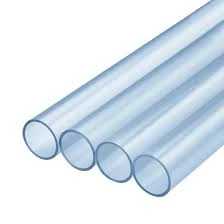Sep . 28, 2024 14:46 Back to list
HDPE Sheet Dimensions and Variations for Various Applications
Understanding HDPE Sheet Sizes A Comprehensive Guide
High-Density Polyethylene (HDPE) is a versatile thermoplastic polymer known for its strength, durability, and resistance to a range of environmental factors. It has become a preferred material in diverse applications, from packaging to construction. One of the key aspects of utilizing HDPE effectively is understanding the various sheet sizes available in the market. In this article, we will delve into the dimensions, applications, and considerations when selecting HDPE sheet sizes.
What is HDPE?
HDPE stands for High-Density Polyethylene, which is characterized by its high strength-to-density ratio. Its molecular structure gives it robustness and makes it highly resistant to impact, chemicals, and UV radiation, making it suitable for both indoor and outdoor applications. It is lightweight, yet strong, which enhances its utility in several industrial sectors, including construction, agriculture, and manufacturing.
Standard HDPE Sheet Sizes
HDPE sheets are produced in a variety of sizes to accommodate different project requirements. The most common standard sizes include
1. Thickness HDPE sheets can range in thickness from 1/16 inch (1.5 mm) to 2 inches (50 mm) or more. Thicker sheets provide greater strength and durability, making them suitable for heavier applications, while thinner sheets are often used for applications that require flexibility and ease of handling.
2. Width and Length Standard sizes for HDPE sheets typically come in widths of 4 feet (1.22 meters) and 8 feet (2.44 meters). However, they can also be produced in custom sizes to meet specific project needs. The lengths of HDPE sheets can vary, with common lengths being anywhere from 8 feet (2.44 meters) to 20 feet (6.1 meters), depending on the supplier and application.
3. Custom Sizes Many manufacturers offer custom sheet sizes, allowing for tailored solutions for unique applications. Customization can significantly reduce waste and improve efficiency, especially in large-scale projects.
Applications of HDPE Sheets
The versatility of HDPE sheets has led to their use in a myriad of applications
- Construction HDPE sheets are widely used in construction for applications such as vapor barriers, protective liners, and geomembranes. Their resistance to moisture and chemicals makes them ideal for foundations and other critical structures.
hdpe sheet sizes

- Manufacturing In manufacturing, HDPE sheets serve as components for machinery, equipment housings, and industrial containers. They are also used in the production of custom parts for various industries.
- Agriculture HDPE sheets are popular in agricultural settings for creating liners in ponds, reservoirs, and waste management systems. They help manage water resources efficiently and prevent contamination.
- Transportation The durability of HDPE makes it an excellent choice for transportation applications, including truck liners and protective coverings for loads.
Considerations When Choosing HDPE Sheet Sizes
When selecting the appropriate HDPE sheet size for a specific application, there are several factors to consider
1. Application Requirements Understand the specific needs of your project. For heavy-duty applications, opting for thicker sheets is advisable, while thinner sheets may suffice for lighter uses.
2. Environmental Conditions Consider the environment in which the HDPE sheets will be used. Exposure to harsh chemicals or extreme weather may necessitate thicker, more robust materials.
3. Compatibility with Other Materials Ensure that the HDPE sheets you choose are compatible with other materials in your project to prevent issues like warping or chemical reactions.
4. Custom Dimensions If standard sizes do not meet your requirements, look for suppliers who offer custom dimensions, allowing for a more tailored fit for your project.
Conclusion
Understanding HDPE sheet sizes is crucial for selecting the right material for your project. The versatility and durability of HDPE make it suitable for a wide range of applications across various industries. By paying attention to factors like thickness, width, length, and specific application requirements, you can choose HDPE sheets that will serve your needs effectively. Whether you are working on a construction project, manufacturing components, or managing agricultural resources, HDPE offers a practical and reliable solution.
-
PVC Transparent Sheet Roll - Durable & Flexible PVC Plastic Sheet Roll for Industrial & Home Use
NewsJun.24,2025
-
High-Quality PVC PPR Pipes and Fittings Durable ERA PPR Solutions
NewsJun.10,2025
-
High-Quality Large HDPE Sheets & Large Diameter PVC Pipe Durable Large PVC Pipe Supplier
NewsJun.10,2025
-
High Density Polyethylene Cutting Board - Durable & Food Safe
NewsJun.09,2025
-
3 Inch PVC Pipe for Durable Irrigation Affordable & Reliable
NewsJun.09,2025
-
Premium PPR Plastic Water Pipe Fittings - Durable & Leak-Free
NewsJun.09,2025

